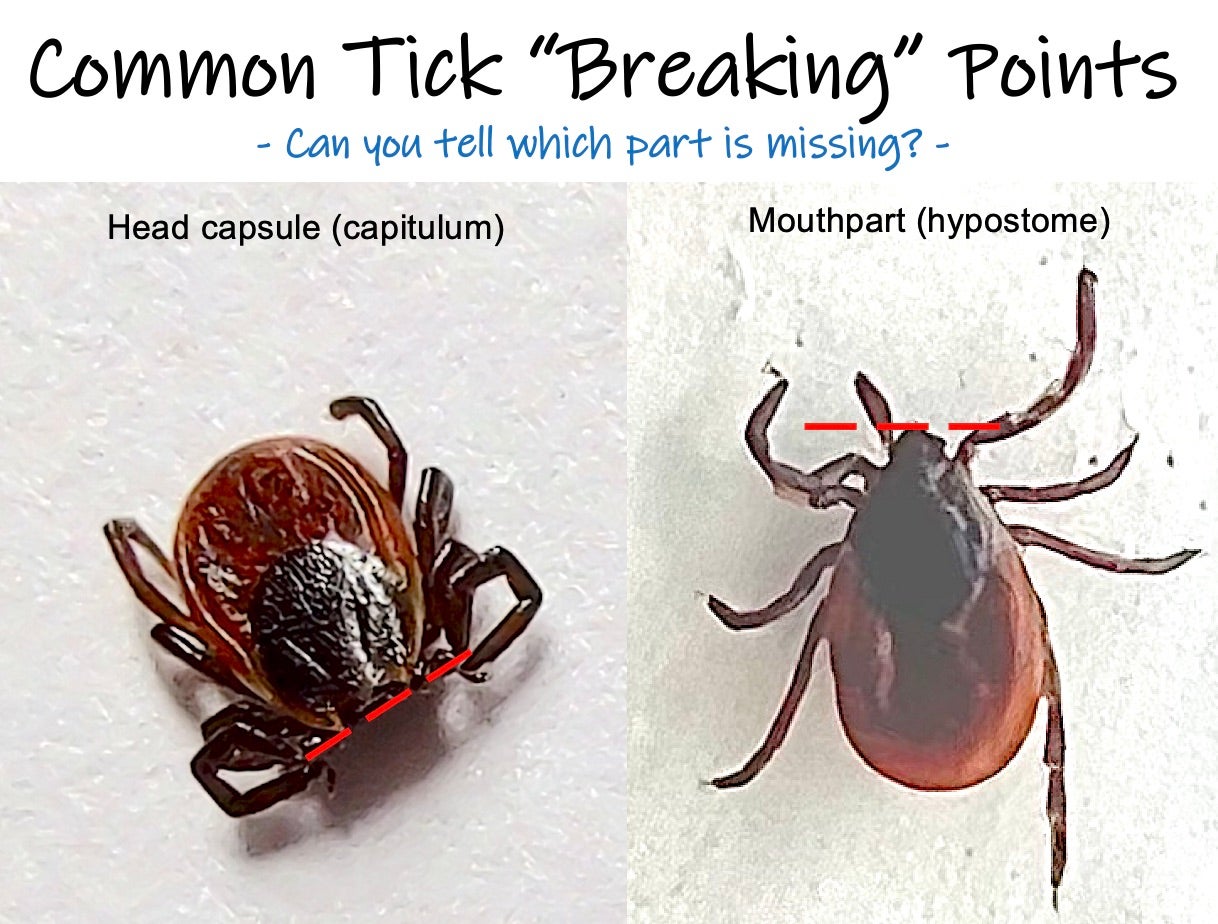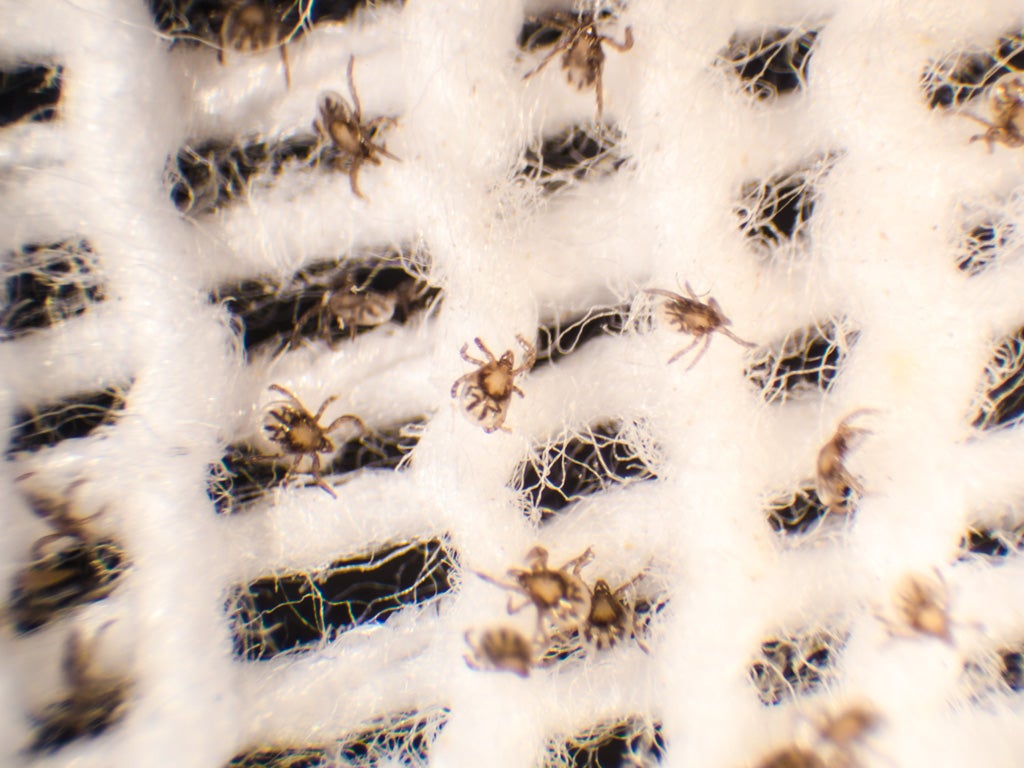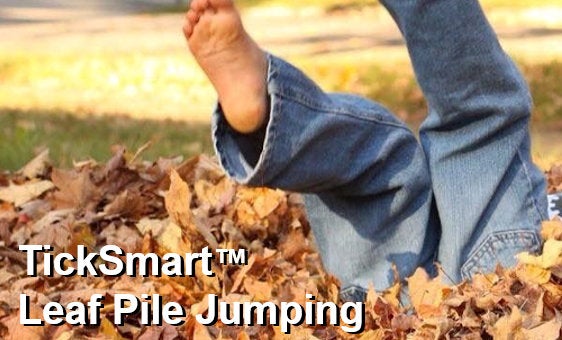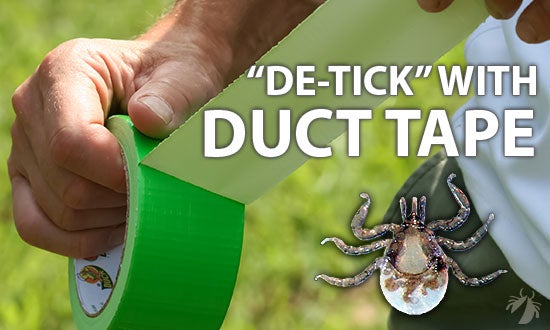Los humanos aprenden a caminar solos cuando tienen alrededor de 14 meses de edad, pero se necesita un entomólogo de salud pública para ofrecer orientación sobre la mejor manera de caminar por un sendero para evitar las garrapatas. Una forma de pensar en los senderos es como una trayectoria, desde la seguridad del estacionamiento o […]
Continue reading "Consejo #9: Manténgase en medio de los senderos"Category: TickSmart Tips
Consejo #7 Métase la parte inferior de la camisa dentro del pantalón cuando las garrapatas adultas estén activas, pero mantengan los dobladillos de los pantalones todo el tiempo
¿Sabía que … las garrapatas en su ciclo ninfa y adulta tienden a pasar el rato en diferentes alturas en el paisaje? Las ninfas permanecen cerca del suelo mientras que los adultos se aventuran un poco hacia la vegetación. Debido a eso, las garrapatas adultas generalmente se enganchan al nivel de la rodilla cuando los […]
Continue reading "Consejo #7 Métase la parte inferior de la camisa dentro del pantalón cuando las garrapatas adultas estén activas, pero mantengan los dobladillos de los pantalones todo el tiempo"Tip #11: Don’t dread the broken “head” on your tick
The second greatest fear people have about tick bites, after contracting Lyme disease, is leaving the tick’s mouth or head in their skin. The 2 most common “breaking points” during tick removal are at the base of the hypostome and the head capsule. Not to worry though. Once either “break” happens, there’s no greater risk […]
Continue reading "Tip #11: Don’t dread the broken “head” on your tick"Tip #10: Keep tiny ticks from crawling through your socks
All ticks come in small, medium, and large sizes, and all tick stages have seasons of activity, too. Late July through September is when the youngest and smallest stage of ticks–the larval stage–are most active. Having hatched from eggs laid in clumps of up to 3,000 or more earlier in the springtime, it’s quite common […]
Continue reading "Tip #10: Keep tiny ticks from crawling through your socks"Tip #9: Stay in the middle of trails
Humans learn how to walk on their own when they’re about 14 months old but it takes a public health entomologist to offer guidance on how best to walk on a trail to avoid ticks. One way to think about trails is as a pathway–from the safety of the parking lot or open space–heading deeper […]
Continue reading "Tip #9: Stay in the middle of trails"Tip #8: Keep leaf piles for jumping in the middle of the yard
Kids and dogs seem to just LOVE jumping into freshly raked leaves in the Fall. It’s an adventure full of joy, and you can make it a bit more carefree by piling freshly fallen leaves for jumping into out in the middle of yards. The type of tick most (>80%) people and pets encounter in Fall are adult […]
Continue reading "Tip #8: Keep leaf piles for jumping in the middle of the yard"Tip #7: Tuck in your shirt tail when adult ticks are active but tuck your pant cuffs all the time
Did you know…nymph and adult stage ticks tend to hang out at different heights in the landscape? Nymphs stay close to the ground while adults adventure up just a bit onto vegetation. Because of that, adult ticks typically latch on about knee level as hosts pass by, while nymphs commonly latch on at shoe level. […]
Continue reading "Tip #7: Tuck in your shirt tail when adult ticks are active but tuck your pant cuffs all the time"Tip #6: Always have pointy tweezers and a ziplock bag
If you don’t have one, it’s important to be prepared by having a good pointy tweezers for safe tick removal in your home and car. You might want to try Bug Bite Thing Tick Remover, ProTickMe, or another pointy-tipped tweezer. Both of the ones linked are very reasonably priced. Keep the tweezer in a ziplock bag so […]
Continue reading "Tip #6: Always have pointy tweezers and a ziplock bag"Tip #5: De-tick with duct tape
To get the larvae off of you and the dog before they bite, we recommend using sticky duct tape as soon as you notice the ticks latched on. If you don’t find them until they’re already biting, they may not come off as easily, and you may need a fine-pointed tweezer to pluck them off. Remember […]
Continue reading "Tip #5: De-tick with duct tape"Tip #4: Check below the belt for poppy seed-sized or smaller ticks while sitting on the toilet
Doing DAILY TICK CHECKS is an effective way to prevent disease transmission. But INSPECTING all those places where tiny ticks might crawl is – DIFFICULT! We’ve got sturdy Tick Check cards and a childrens learning kit for knowing where to look and what to look for. We even have an innovative BEST PRACTICE for making daily tick checks as easy as, well, sitting on […]
Continue reading "Tip #4: Check below the belt for poppy seed-sized or smaller ticks while sitting on the toilet"







